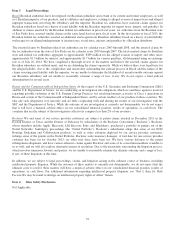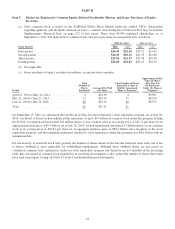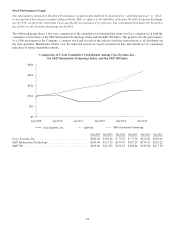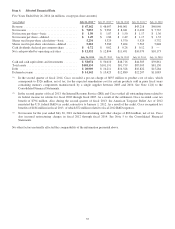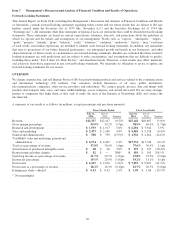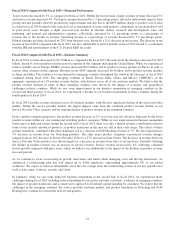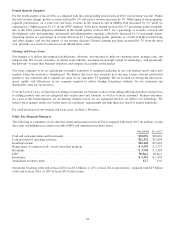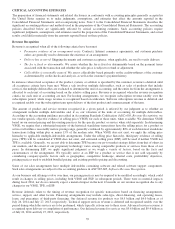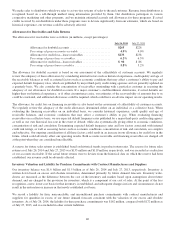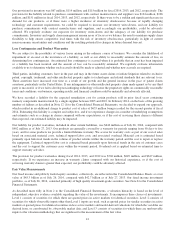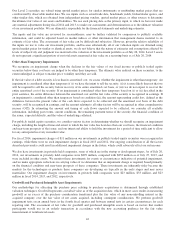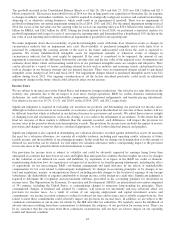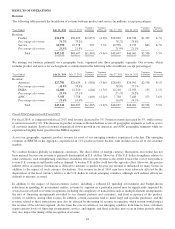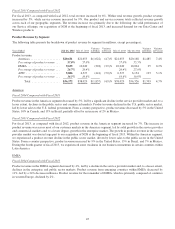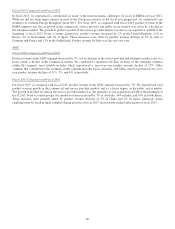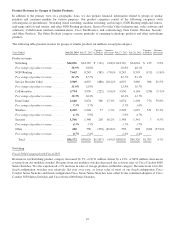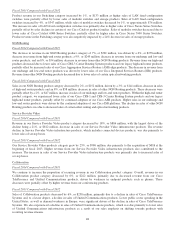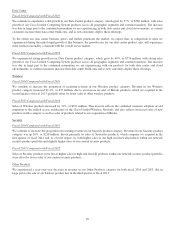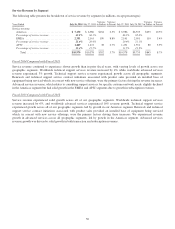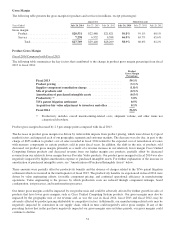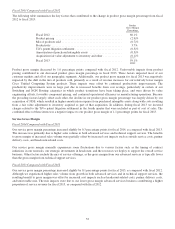Cisco 2014 Annual Report Download - page 50
Download and view the complete annual report
Please find page 50 of the 2014 Cisco annual report below. You can navigate through the pages in the report by either clicking on the pages listed below, or by using the keyword search tool below to find specific information within the annual report.Our Level 2 securities are valued using quoted market prices for similar instruments or nonbinding market prices that are
corroborated by observable market data. We use inputs such as actual trade data, benchmark yields, broker/dealer quotes, and
other similar data, which are obtained from independent pricing vendors, quoted market prices, or other sources to determine
the ultimate fair value of our assets and liabilities. We use such pricing data as the primary input, to which we have not made
any material adjustments during fiscal 2014 and 2013, to make our assessments and determinations as to the ultimate valuation
of our investment portfolio. We are ultimately responsible for the financial statements and underlying estimates.
The inputs and fair value are reviewed for reasonableness, may be further validated by comparison to publicly available
information, and could be adjusted based on market indices or other information that management deems material to its
estimate of fair value. The assessment of fair value can be difficult and subjective. However, given the relative reliability of
the inputs we use to value our investment portfolio, and because substantially all of our valuation inputs are obtained using
quoted market prices for similar or identical assets, we do not believe that the nature of estimates and assumptions affected by
levels of subjectivity and judgment was material to the valuation of the investment portfolio as of July 26, 2014. Level 3 assets
do not represent a significant portion of our total assets measured at fair value on a recurring basis as of July 26, 2014.
Other-than-Temporary Impairments
We recognize an impairment charge when the declines in the fair values of our fixed income or publicly traded equity
securities below their cost basis are judged to be other than temporary. The ultimate value realized on these securities, to the
extent unhedged, is subject to market price volatility until they are sold.
If the fair value of a debt security is less than its amortized cost, we assess whether the impairment is other than temporary. An
impairment is considered other than temporary if (i) we have the intent to sell the security, (ii) it is more likely than not that we
will be required to sell the security before recovery of its entire amortized cost basis, or (iii) we do not expect to recover the
entire amortized cost of the security. If an impairment is considered other than temporary based on (i) or (ii) described in the
prior sentence, the entire difference between the amortized cost and the fair value of the security is recognized in earnings. If
an impairment is considered other than temporary based on condition (iii), the amount representing credit loss, defined as the
difference between the present value of the cash flows expected to be collected and the amortized cost basis of the debt
security, will be recognized in earnings, and the amount relating to all other factors will be recognized in other comprehensive
income (OCI). In estimating the amount and timing of cash flows expected to be collected, we consider all available
information, including past events, current conditions, the remaining payment terms of the security, the financial condition of
the issuer, expected defaults, and the value of underlying collateral.
For publicly traded equity securities, we consider various factors in determining whether we should recognize an impairment
charge, including the length of time and extent to which the fair value has been less than our cost basis, the financial condition
and near-term prospects of the issuer, and our intent and ability to hold the investment for a period of time sufficient to allow
for any anticipated recovery in market value.
For fiscal 2014, impairment charges of $11 million on our investments in publicly traded equity securities were recognized in
earnings, while there were no such impairment charges in fiscal 2013 and 2012. Our ongoing consideration of all the factors
described previously could result in additional impairment charges in the future, which could adversely affect our net income.
We also have investments in privately held companies, some of which are in the startup or development stages. As of July 26,
2014, our investments in privately held companies were $899 million, compared with $833 million as of July 27, 2013, and
were included in other assets. We monitor these investments for events or circumstances indicative of potential impairment,
and we make appropriate reductions in carrying values if we determine that an impairment charge is required, based primarily
on the financial condition and near-term prospects of these companies. These investments are inherently risky because the
markets for the technologies or products these companies are developing are typically in the early stages and may never
materialize. Our impairment charges on investments in privately held companies were $23 million, $33 million, and $23
million in fiscal 2014, 2013, and 2012, respectively.
Goodwill and Purchased Intangible Asset Impairments
Our methodology for allocating the purchase price relating to purchase acquisitions is determined through established
valuation techniques. Goodwill represents a residual value as of the acquisition date, which in most cases results in measuring
goodwill as an excess of the purchase consideration transferred plus the fair value of any noncontrolling interest in the
acquired company over the fair value of net assets acquired, including contingent consideration. We perform goodwill
impairment tests on an annual basis in the fourth fiscal quarter and between annual tests in certain circumstances for each
reporting unit. The assessment of fair value for goodwill and purchased intangible assets is based on factors that market
participants would use in an orderly transaction in accordance with the new accounting guidance for the fair value
measurement of nonfinancial assets.
42


